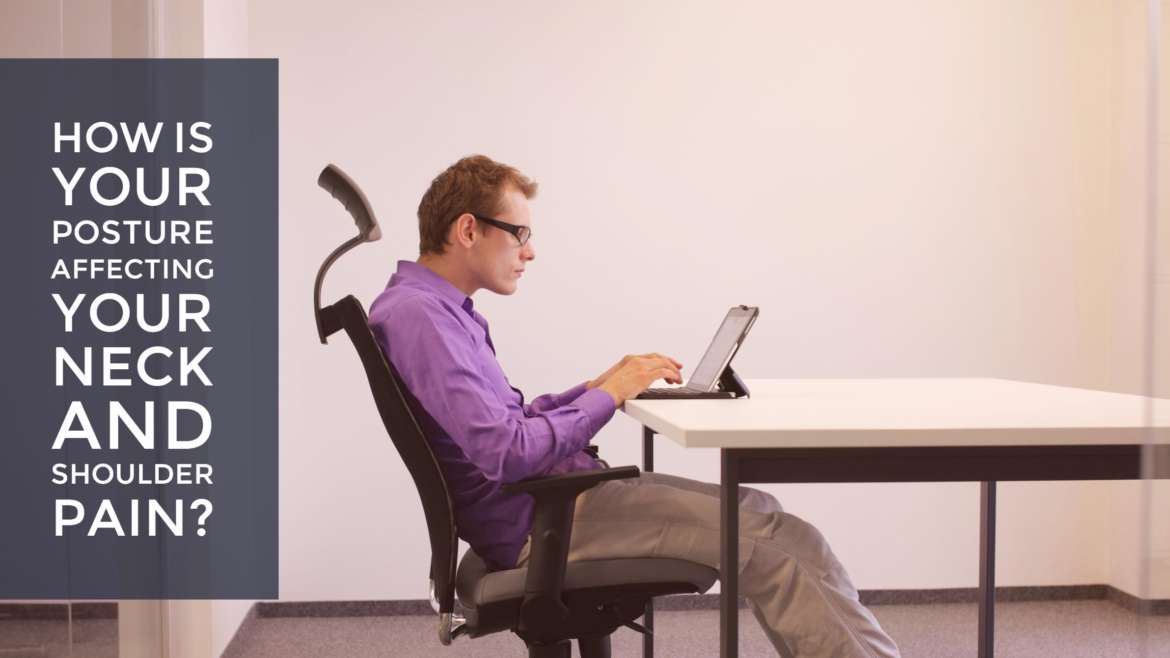Poor posture can rightly be considered a national epidemic – it’s now undeniable that we’re a nation of slouches, as the 31 million working days that are lost each year to this chronic condition are testament to.
Yet poor posture doesn’t only bring about potentially serious back issues, but also fosters neck and shoulder pain (which ranges from the everyday, to the altogether more serious, where further compounding conditions come about as a result).
Where you feel neck and shoulder pain
Our posture relies upon our skeletal and muscular structures – each of which rely on a complex network of components in order to avoid deformity and provide support. Because of this, pain in the neck and shoulders may be felt not only in the immediate areas of the neck and shoulders, but also down the chest and back.
Poor posture related to the head and neck is most commonly down to ‘forward head posture syndrome’ which is defined by a collapse of spinal curves, an increased forward positon of the neck and rounded (or hunched) shoulders. This particular condition is most commonly seen during adolescence, pregnancy, in office workers and in the elderly.
Further issues that poor posture can bring about include:
• Back pain
• Headaches
• Spinal problems
• Muscle fatigue and strain
• Joint degeneration and increased disc problems
• Ligament laxity/stretch
• Rounded shoulders
• Poor circulation

Common posture mistakes
Everyday life throws up a litany of potential for poor posture; here are the most common contenders for poor posture inducing pain:
• Slouching in a chair
• Sticking your bottom out/leaning forward as you sit or walk
• Standing with a flat back
• Leaning on one leg (most commonly experienced by those who stand for long periods at a time, such as retail workers)
• Hunched back and ‘text neck’
• Rounded shoulders
• Cradling your phone with your chin
How your posture is affecting your pain
In relation to the neck, pain can come about in direct relation to a number of muscles becoming taught. There are several sets of muscles that contribute to holding our heads up, and rotating the head:
• The Scalene muscles (the three pairs of muscles that assist the neck as it rotates)
• The Suboccipital muscles (the four pairs of muscles used when we rotate our heads)
• The Pectoralis minor muscles (the pair of relatively thin triangle shaped muscles located in the upper chest)
• The Subscapularis muscles (the pair of large triangle shaped muscles located close to each shoulder joint)
• The Levator scapulae muscles (the pair of muscles located at the back and side of the neck)
How osteopathy can help with poor posture
Osteopathy provides for many treatments that can help re-align and redress your neck and back muscles – even where damage may have taken its toll over time. In fact, this form of treatment is often the most commonly provided of all amongst osteopaths (where 90% of cases include neck pain as a rest of poor posture).
Specific treatments and outcomes include:
• The improvement of muscular flexibility in the neck and shoulders
• The improvement of joint motion in the spine
• Advice on ergonomics
• The provision of exercises to strengthen the postural muscles
Perhaps most importantly is that we give actionable advice as to how you can make simple changes to have a better posture – something that is invaluable to help your pain improve.
To make an appointment call us on 020 3589 8664.



Add Comment